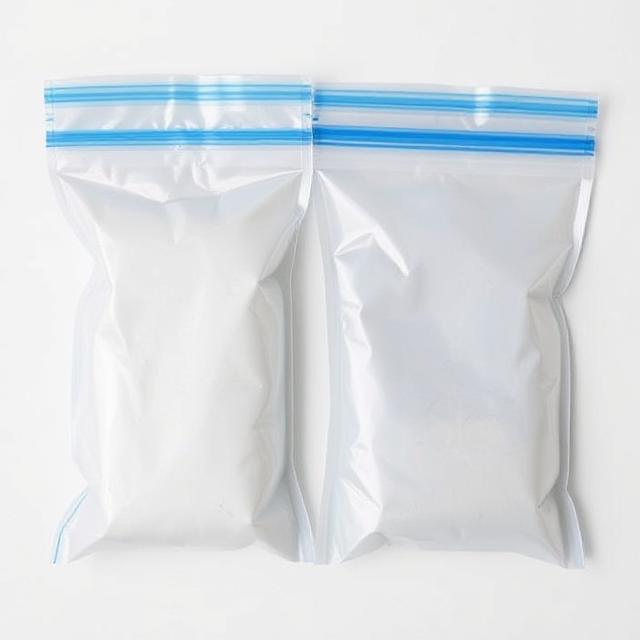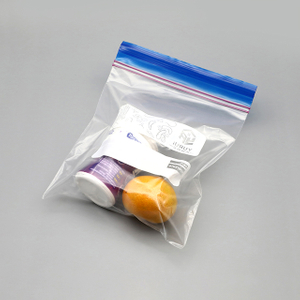Introduction
Vacuum seal bags have become essential in both household and commercial environments for preserving food, reducing waste, and optimizing storage. As sustainability becomes more critical and businesses aim to reduce operational costs, a common question arises: Can vacuum seal bags be reused? Understanding the reusability of these bags not only contributes to environmental responsibility but also influences purchasing decisions and long-term storage planning.
Yes, you can reuse vacuum seal bags, provided they are in good condition and properly cleaned between uses.
This article will explore the factors influencing vacuum seal bag reusability, safety guidelines, benefits, limitations, industrial considerations, and environmental impacts. We'll also discuss cleaning procedures, compare single-use vs. reusable bags, and examine how different industries approach vacuum sealing for repeated usage.

Table of Contents
Can You Reuse Vacuum Seal Bags Safely?
Factors That Determine Vacuum Seal Bag Reusability
How to Clean and Maintain Vacuum Seal Bags for Reuse
Pros and Cons of Reusing Vacuum Seal Bags
Applications in Different Industries
Comparison: Reusable vs. Single-use Vacuum Seal Bags
Environmental and Cost Benefits of Reuse
Best Practices for Businesses Using Vacuum Seal Bags
Frequently Asked Questions About Vacuum Seal Bag Reuse
Conclusion
Can You Reuse Vacuum Seal Bags Safely?
Yes, vacuum seal bags can be reused safely if they are undamaged and thoroughly cleaned.
Vacuum seal bags, especially those made of thick, multi-layer plastic materials, are generally durable enough to be reused multiple times. However, safety is paramount. Reuse is most appropriate when the bags were originally used to store non-greasy, dry items or items that did not leave residues that are difficult to remove. For food storage, especially meats and seafood, extra caution is required due to contamination risks.
Reusing vacuum seal bags safely requires visual inspection, proper cleaning, and awareness of cross-contamination. Most commercial-grade vacuum sealers also allow for bag resizing, making them ideal for reuse. That said, one should never reuse bags that have been punctured, melted, or show signs of wear that compromise their seal integrity.
Factors That Determine Vacuum Seal Bag Reusability
Several factors determine whether a vacuum seal bag can be reused, including bag material, previous contents, wear and tear, and sealing mechanism.
1. Material Composition
Vacuum seal bags are typically made from polyethylene or nylon with a multi-layer design for durability and airtight sealing. Thicker, textured bags tend to be more reusable than thinner, single-layer ones. Bags designed for external suction machines often offer higher reusability because of their rugged construction.
2. Previous Use
What was stored in the bag before reuse is crucial. Bags used for dry goods, textiles, or non-oily items are easier to clean and pose fewer contamination risks. In contrast, bags used for raw meat, dairy, or oily foods may retain residues or bacteria, making them less ideal for reuse.
3. Physical Condition
Bags must be inspected for holes, tears, or compromised seals. Even minor abrasions can impact vacuum effectiveness. Sealing edges should also be evaluated; once the seal is broken, you may need to cut a new edge, which shortens the bag and limits reusability.
4. Compatibility with Sealers
Some sealers are designed to work with pre-cut or specific types of bags. If you plan to reuse bags, ensure your vacuum sealer supports custom-length sealing to accommodate trimmed or resized bags.
How to Clean and Maintain Vacuum Seal Bags for Reuse
To reuse vacuum seal bags safely, clean them thoroughly with warm soapy water, rinse, and air dry before storing or sealing again.
Step-by-Step Cleaning Process
Empty and Inspect
Remove all contents and check for damage. Discard any bags with holes, tears, or residual odors.Wash
Use warm, soapy water and a soft sponge to clean the inside. Avoid scrubbing with abrasive materials that could damage the inner layers.Sanitize
For added safety, especially with food-contact bags, use a diluted vinegar solution or food-safe sanitizer to disinfect.Rinse Thoroughly
Ensure all soap or cleaning agents are rinsed off completely to prevent contamination.Dry
Allow bags to air dry fully by hanging them or placing them upright. Avoid sealing damp bags as moisture may compromise the vacuum.Store Properly
Store cleaned bags flat in a clean, dry place. Label them if necessary to indicate prior use.
Maintenance Tips
Avoid microwaving reused vacuum seal bags unless labeled microwave-safe.
Do not reuse bags for vacuum sealing liquids unless you’re confident in the sealing mechanism.
Cut only as much of the seal as necessary to retain usable length.
Pros and Cons of Reusing Vacuum Seal Bags
Reusing vacuum seal bags is economical and eco-friendly but requires proper care and hygiene.
| Pros | Cons |
|---|---|
| Cost-effective over time | Risk of cross-contamination |
| Environmentally sustainable | Cleaning requires time and effort |
| Reduces plastic waste | Loss of bag length with each reuse |
| Suitable for non-food items | Not suitable for high-fat or raw meat reuse |
Cost Benefits
Businesses using large volumes of vacuum seal bags can save significantly by reusing bags that stored dry goods or non-perishables.
Hygiene Risks
Without proper sanitation, reused bags can harbor bacteria, especially those that stored perishable foods. For this reason, some industries strictly avoid reuse unless sterilization is guaranteed.
Applications in Different Industries
Reused vacuum seal bags are commonly applied in dry goods storage, textile preservation, and parts packaging across various industries.
1. Food Industry
Limited use due to strict hygiene protocols
May reuse bags for non-perishable, dry foods
Often avoided in commercial meat processing
2. Electronics and Parts Packaging
Suitable for storing components and preventing oxidation
Labeling reused bags helps track previous contents and avoid confusion
3. Textile and Apparel
Vacuum sealing garments or fabrics for shipment or storage
High reuse potential as textiles pose low contamination risks
4. Medical and Pharmaceutical
Reuse discouraged unless bags are sterilized and integrity is maintained
Regulatory standards often mandate single-use
Comparison: Reusable vs. Single-use Vacuum Seal Bags
Reusable bags are thicker and more durable, while single-use bags are cheaper upfront and often used in strict hygiene settings.
| Feature | Reusable Bags | Single-use Bags |
|---|---|---|
| Thickness | 3-5 mil | 2-3 mil |
| Cleaning | Washable | Not intended for reuse |
| Cost | Higher initial cost | Lower upfront cost |
| Environmental Impact | Lower long-term waste | High plastic usage |
| Food Safety | Requires careful sanitation | Guaranteed safety (once) |
Use Case Suitability
Reusable Bags: Ideal for home use, dry goods, non-food items, or sustainable businesses.
Single-use Bags: Suitable for foodservice, healthcare, and other environments requiring strict hygiene.
Environmental and Cost Benefits of Reuse
Reusing vacuum seal bags significantly reduces plastic waste and long-term packaging costs.
Environmental Impact
Vacuum seal bags, if disposed of after a single use, contribute to the growing problem of plastic waste. Reuse supports sustainability goals and contributes to greener supply chains.
Cost Analysis
Let’s compare the costs of using new vs. reused bags over 100 sealing operations:
| Operation Type | Cost per Bag | Total Cost (100 Uses) |
|---|---|---|
| Single-use | $0.25 | $25 |
| Reusable (used 3x) | $0.40 | $13.33 |
The cost savings become even more significant in large-scale commercial applications, making reuse a financially sound choice when safe and practical.
Best Practices for Businesses Using Vacuum Seal Bags
Businesses should implement reusability protocols to balance hygiene, cost, and sustainability.
1. Develop a Reuse Policy
Include guidelines on:
Which bags may be reused
Cleaning and storage standards
Limits on reuse cycles
2. Train Staff
Ensure employees understand cleaning procedures and how to inspect bags for integrity.
3. Label and Track
Use a labeling system to track usage cycles and original contents, avoiding cross-contamination or misapplication.
4. Invest in Compatible Equipment
Choose vacuum sealers that support custom bag lengths and offer adjustable settings for various bag thicknesses.
Frequently Asked Questions About Vacuum Seal Bag Reuse
Can I reuse vacuum seal bags for raw meat?
It is not recommended due to potential contamination and bacteria retention.
How many times can a vacuum seal bag be reused?
Typically 2–3 times, depending on its condition and previous usage.
Are all vacuum seal bags reusable?
No, only multi-layer, heavy-duty bags are suitable for multiple uses.
Is there a difference between commercial and home-use vacuum seal bags?
Yes, commercial-grade bags are thicker and more suitable for reuse.
Can I reuse vacuum bags from different brands?
Yes, if the material is compatible with your sealing machine and the bags are undamaged.
Conclusion
Vacuum seal bag reuse is both feasible and beneficial when executed with care. By understanding the conditions for safe reuse, selecting the right bag types, and implementing proper cleaning protocols, businesses and individuals can reduce costs, minimize environmental impact, and enhance operational efficiency.
While not all vacuum seal bags are ideal for reuse—especially in food or medical settings—many industrial and household applications can safely take advantage of reusability. With growing emphasis on sustainability and cost control, learning how and when to reuse vacuum seal bags is a valuable practice for modern operations.















